
How to Use STM32U083C-DK: Examples, Pinouts, and Specs
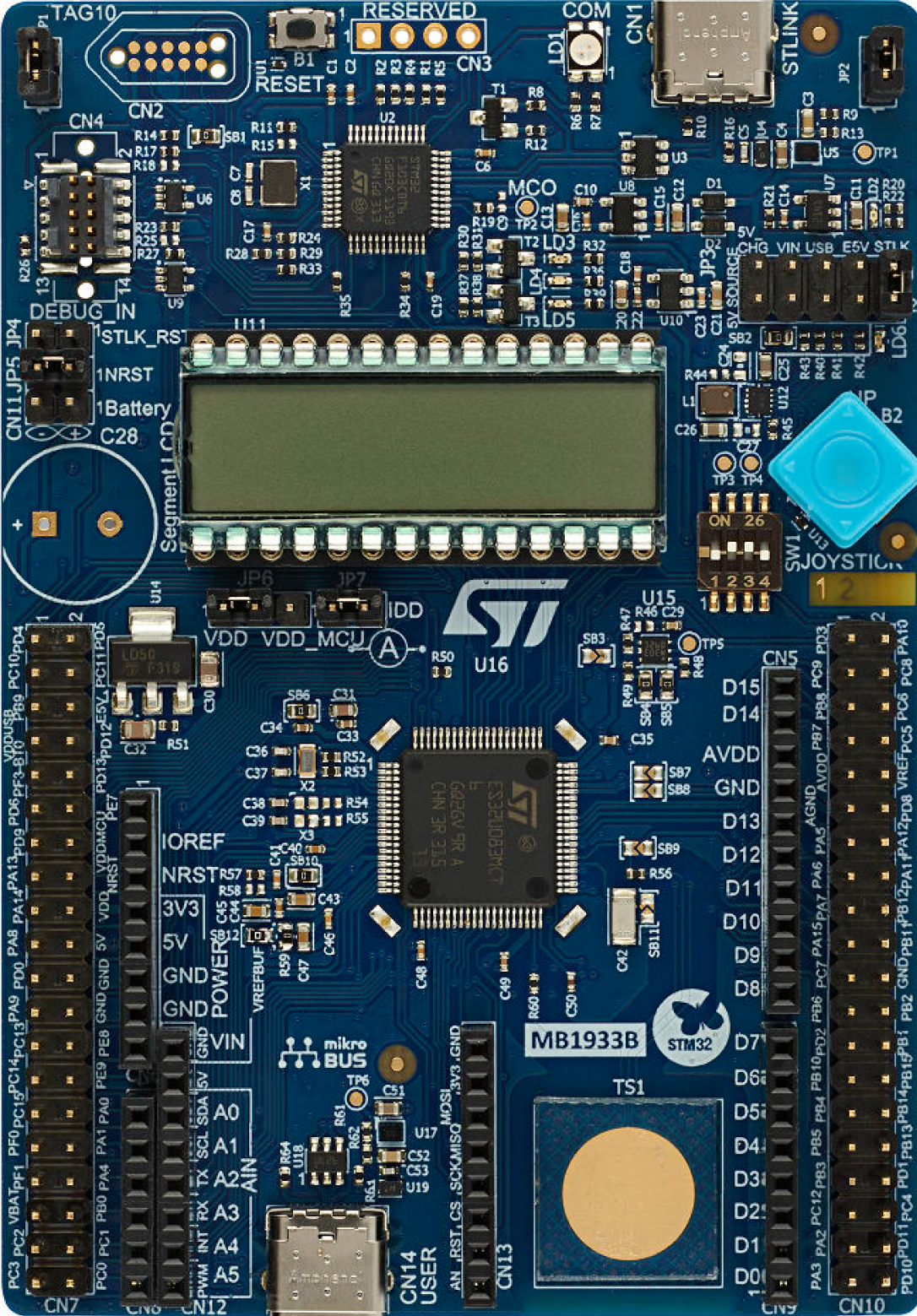
 Design with STM32U083C-DK in Cirkit Designer
Design with STM32U083C-DK in Cirkit DesignerIntroduction
The STM32U083C-DK Development Kit is a comprehensive platform for prototyping and evaluating the STM32U083C microcontroller from ST Microelectronics. This microcontroller is part of the STM32 family, which is renowned for its high performance, low power consumption, and advanced features. The development kit is ideal for a wide range of applications, including industrial control, consumer electronics, and Internet of Things (IoT) devices.
Explore Projects Built with STM32U083C-DK
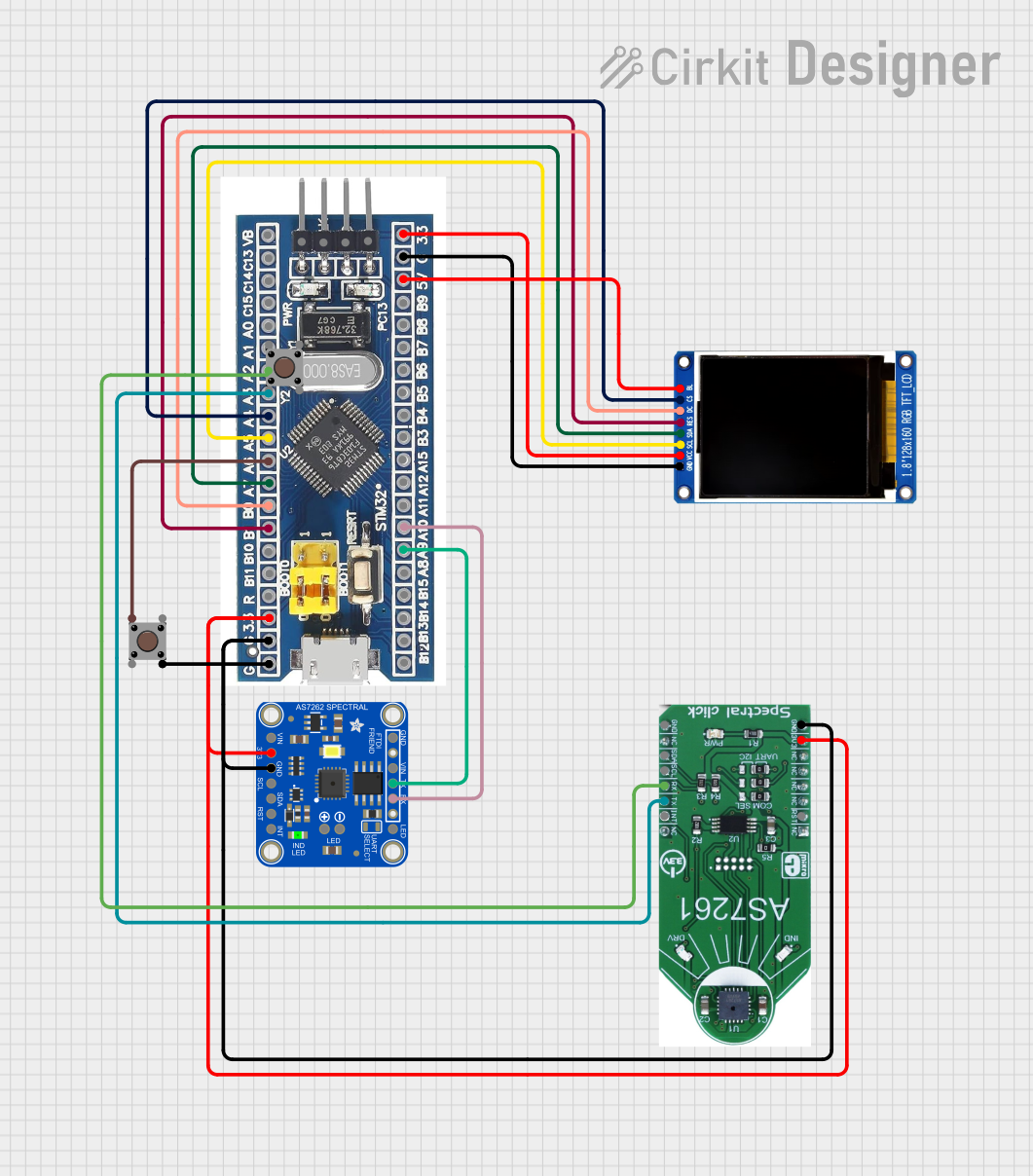
 Open Project in Cirkit Designer
Open Project in Cirkit Designer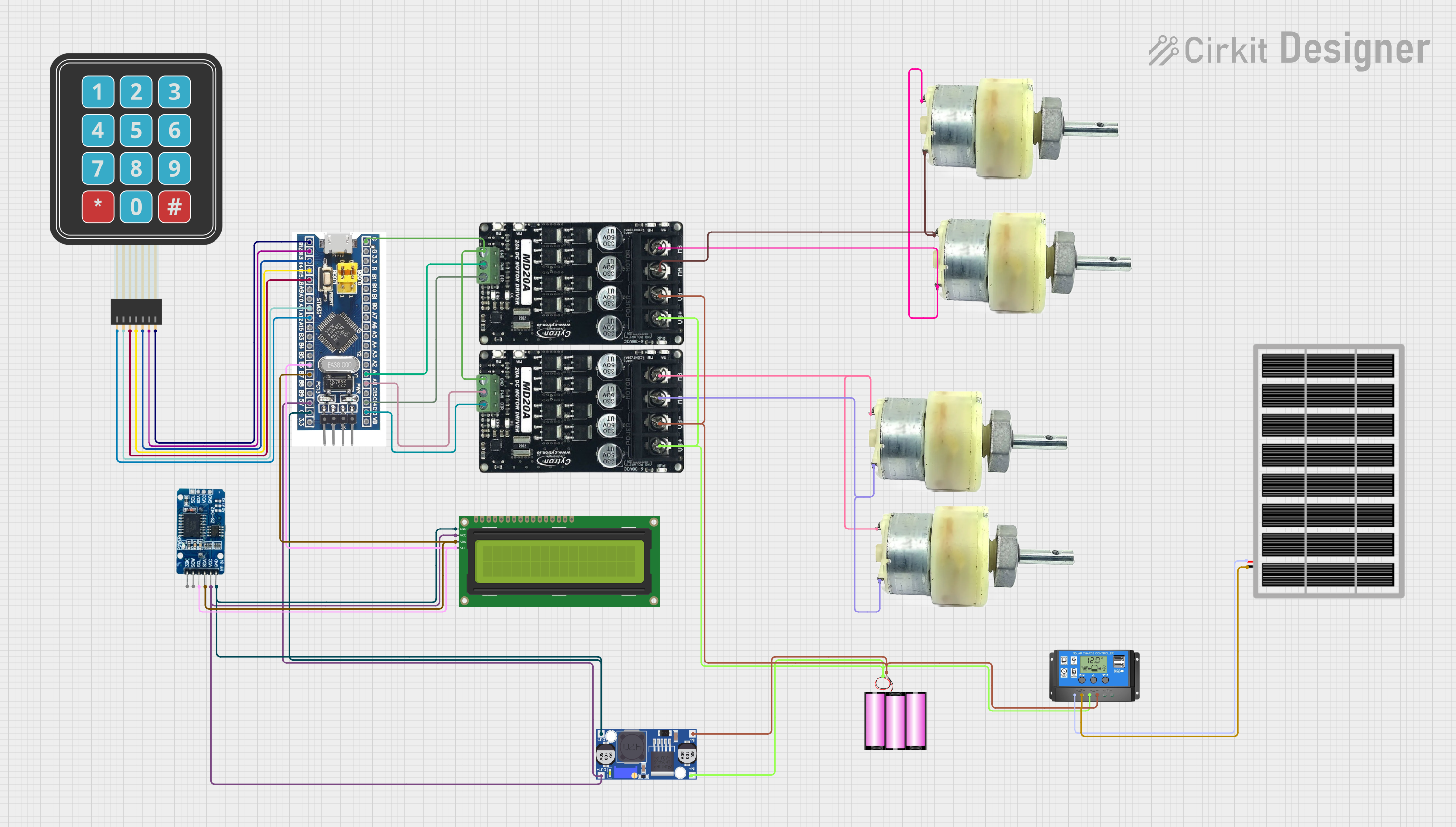
 Open Project in Cirkit Designer
Open Project in Cirkit Designer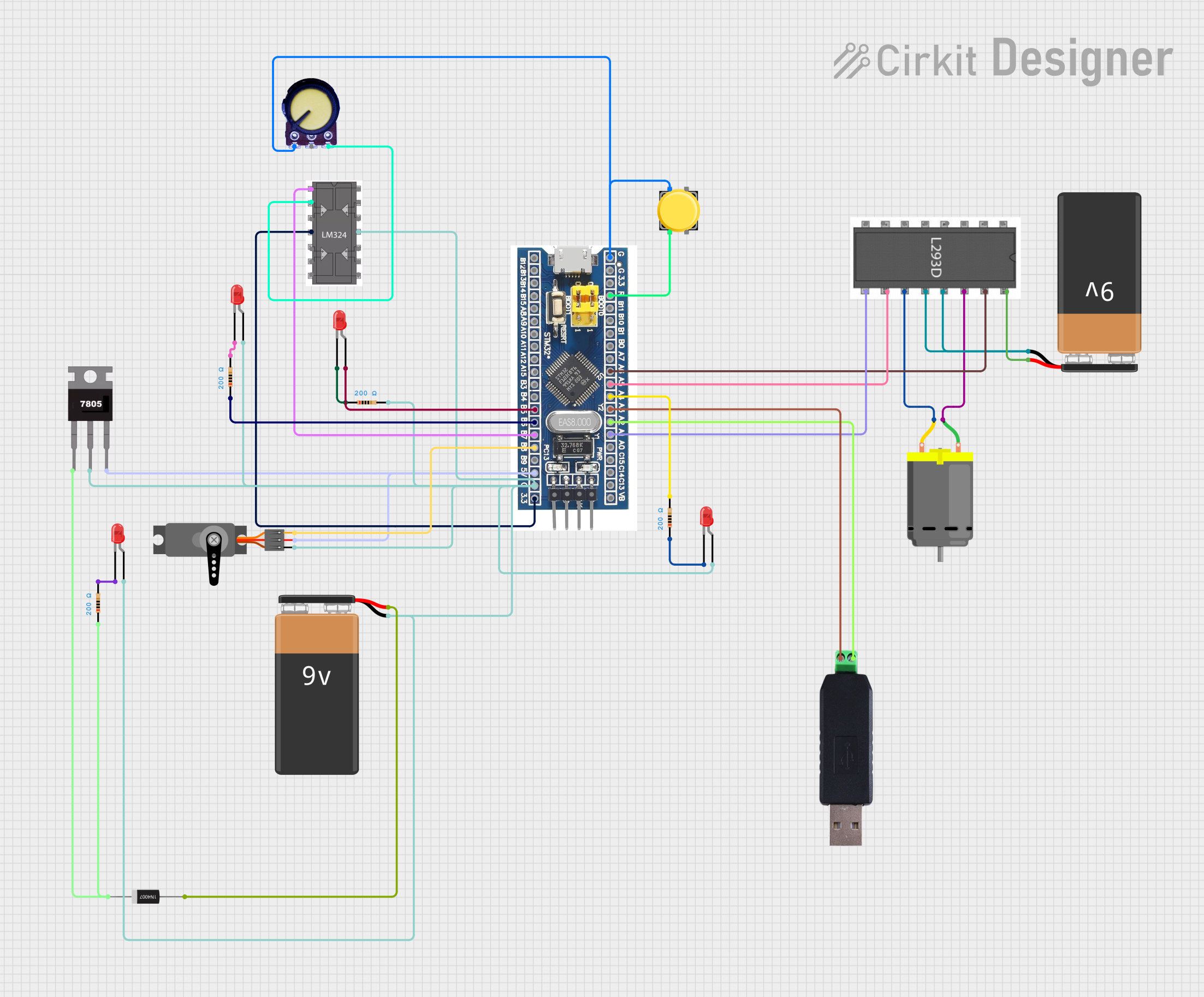
 Open Project in Cirkit Designer
Open Project in Cirkit Designer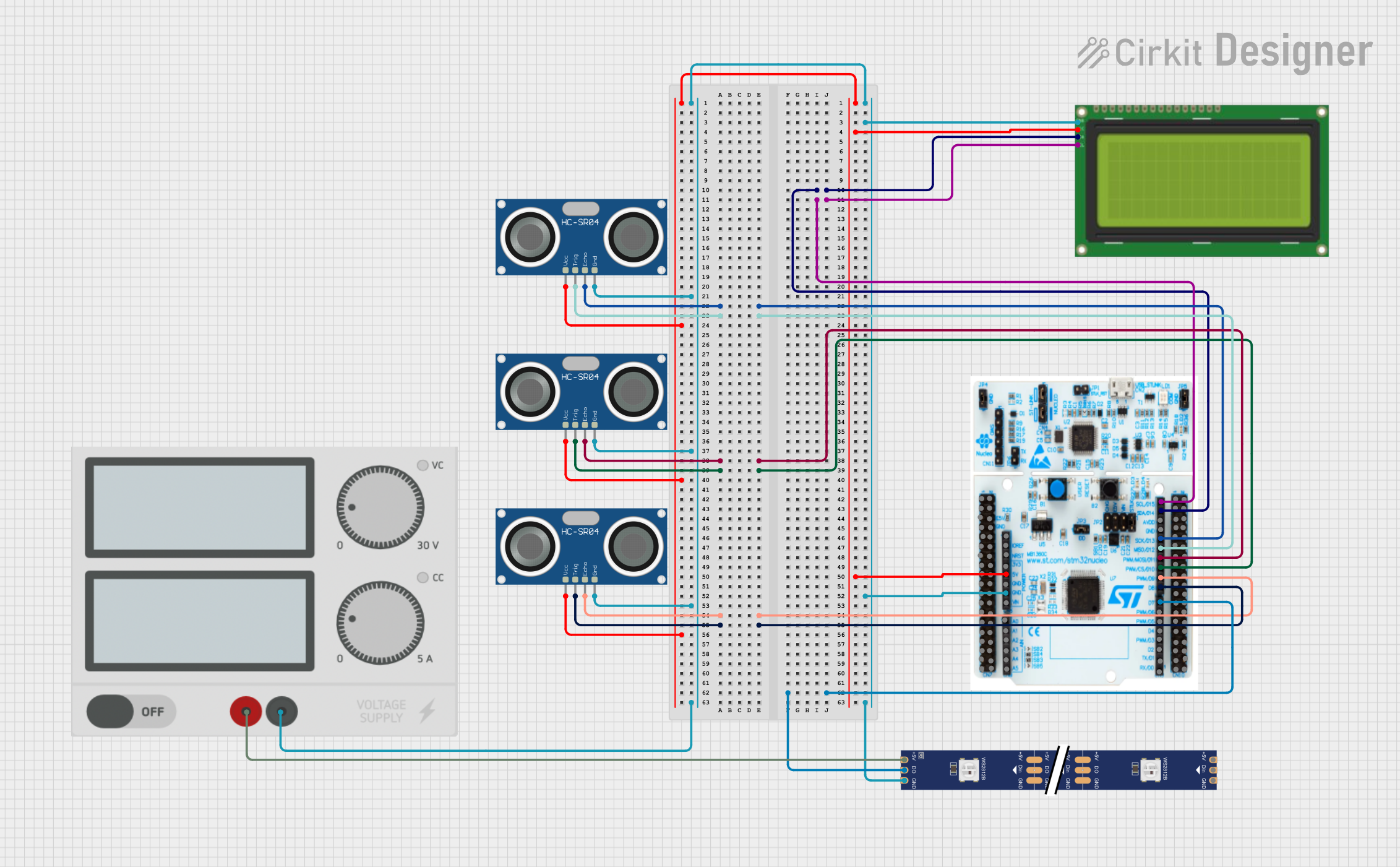
 Open Project in Cirkit Designer
Open Project in Cirkit DesignerExplore Projects Built with STM32U083C-DK

 Open Project in Cirkit Designer
Open Project in Cirkit Designer
 Open Project in Cirkit Designer
Open Project in Cirkit Designer
 Open Project in Cirkit Designer
Open Project in Cirkit Designer
 Open Project in Cirkit Designer
Open Project in Cirkit DesignerTechnical Specifications
Key Technical Details
- Microcontroller: STM32U083C
- Core: ARM Cortex-M0+
- Operating Voltage: 1.8V to 3.6V
- Flash Memory: 64 KB
- SRAM: 8 KB
- Clock Frequency: Up to 64 MHz
- Analog-to-Digital Converter (ADC): 12-bit resolution
- Digital-to-Analog Converter (DAC): 12-bit resolution
- Communication Interfaces: I2C, SPI, UART, USB
- Debugging: On-board ST-LINK/V2-1 debugger/programmer
Pin Configuration and Descriptions
| Pin Number | Pin Name | Description |
|---|---|---|
| 1 | VDD | Power supply voltage |
| 2 | VSS | Ground reference |
| 3-6 | PA0-PA3 | GPIO/ADC/DAC/Timers |
| 7-10 | PB0-PB3 | GPIO/ADC/Timers/Communication interfaces |
| ... | ... | ... |
| N | RESET | Reset input |
Note: This is a simplified representation. The actual development kit has many more pins, each with multiple functions.
Usage Instructions
Integrating the STM32U083C-DK into a Circuit
- Power Supply: Connect a stable power source to the VDD pins and ground to the VSS pins.
- Programming: Use the on-board ST-LINK/V2-1 for programming the microcontroller via USB.
- Peripheral Connections: Connect peripherals to the appropriate GPIO pins, taking into account the pin's supported functions.
- Clock Configuration: Configure the system clock source and frequency using the internal or external oscillators.
Important Considerations and Best Practices
- ESD Precautions: Always handle the development kit with proper electrostatic discharge (ESD) precautions.
- Power Sequencing: Ensure that the power supply is stable and within the specified voltage range before powering up the kit.
- Firmware Development: Use the STM32CubeIDE or other compatible development environments for firmware development.
- Pin Multiplexing: Refer to the microcontroller's datasheet for detailed information on pin multiplexing and alternate functions.
Troubleshooting and FAQs
Common Issues
- Power Issues: If the development kit does not power on, check the power supply connections and voltage levels.
- Programming Errors: Ensure that the correct drivers for the ST-LINK/V2-1 are installed and that the USB connection is secure.
- Peripheral Malfunction: Verify that the peripheral is connected to the correct pins and that the pin configuration in the firmware matches the hardware setup.
Solutions and Tips
- Driver Installation: Download and install the latest ST-LINK drivers from the ST Microelectronics website.
- Firmware Debugging: Use the debugging features of the STM32CubeIDE to step through the code and identify issues.
- Consult Documentation: Refer to the STM32U083C microcontroller datasheet for detailed information on its features and capabilities.
FAQs
Q: Can I use the STM32U083C-DK with an Arduino UNO? A: The STM32U083C-DK is not directly compatible with the Arduino UNO form factor, but you can use it alongside an Arduino UNO by connecting the two via communication interfaces such as UART, SPI, or I2C.
Q: What software do I need to develop for the STM32U083C-DK? A: You can use STM32CubeIDE, which is an all-in-one development platform provided by ST Microelectronics, or other compatible ARM development tools.
Q: How do I update the firmware on the ST-LINK/V2-1 debugger/programmer? A: Firmware updates for the ST-LINK/V2-1 can be obtained from the ST Microelectronics website and uploaded using the ST-LINK Utility software.
Example Code for Arduino UNO Communication
// Example code for STM32U083C-DK communicating with Arduino UNO via UART
#include "stm32u0xx_hal.h"
// Initialize UART peripheral (pseudo-code, replace with actual initialization)
void init_UART(void) {
// UART initialization code specific to STM32U083C-DK
}
// Send data to Arduino UNO (pseudo-code, replace with actual send function)
void UART_SendData(uint8_t* data, uint16_t size) {
// Code to send data over UART
}
int main(void) {
// Initialize hardware and UART
HAL_Init();
init_UART();
// Data to send to Arduino UNO
uint8_t message[] = "Hello, Arduino UNO!";
// Send data
UART_SendData(message, sizeof(message));
// Main loop
while (1) {
// Application code
}
}
Note: The above code is a simplified example to illustrate UART communication. Actual implementation will require proper initialization and configuration of the UART peripheral, as well as handling of data reception and error conditions.
This documentation provides a starting point for working with the STM32U083C-DK Development Kit. For more detailed information, consult the STM32U083C microcontroller datasheet and the development kit user manual.